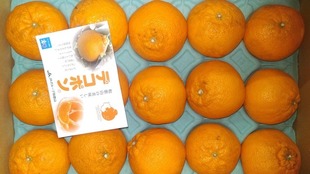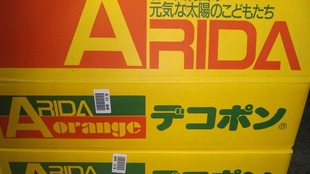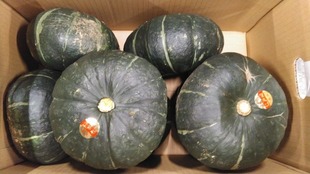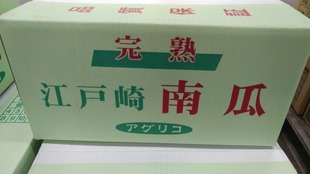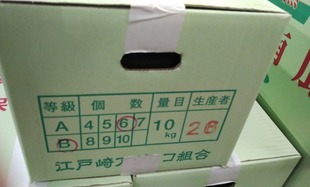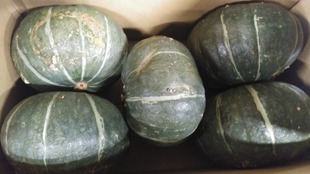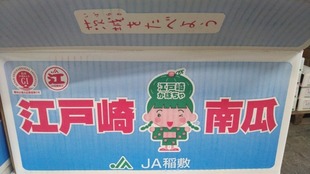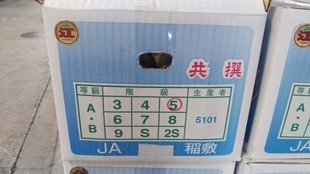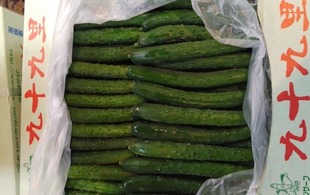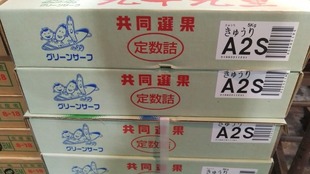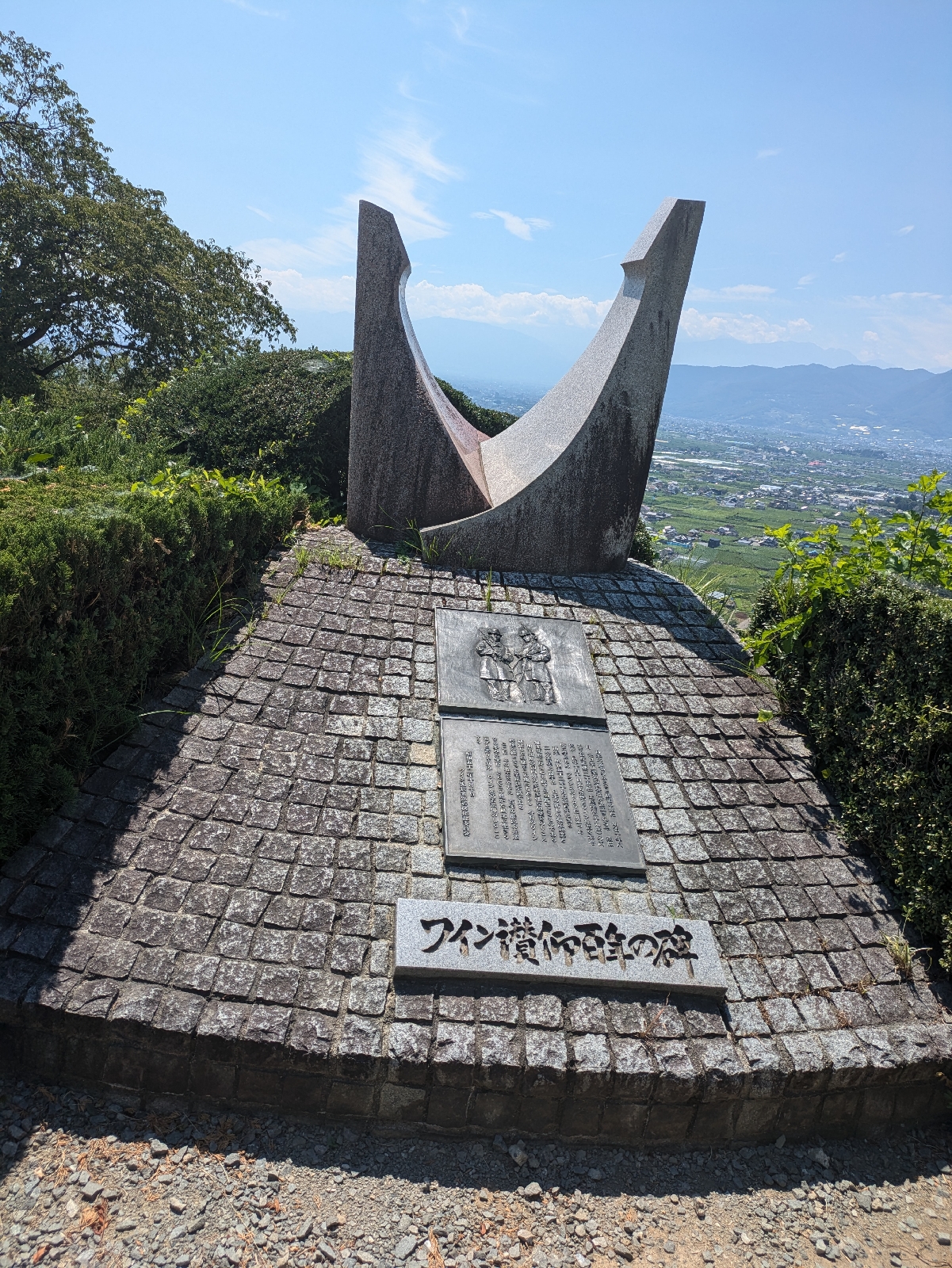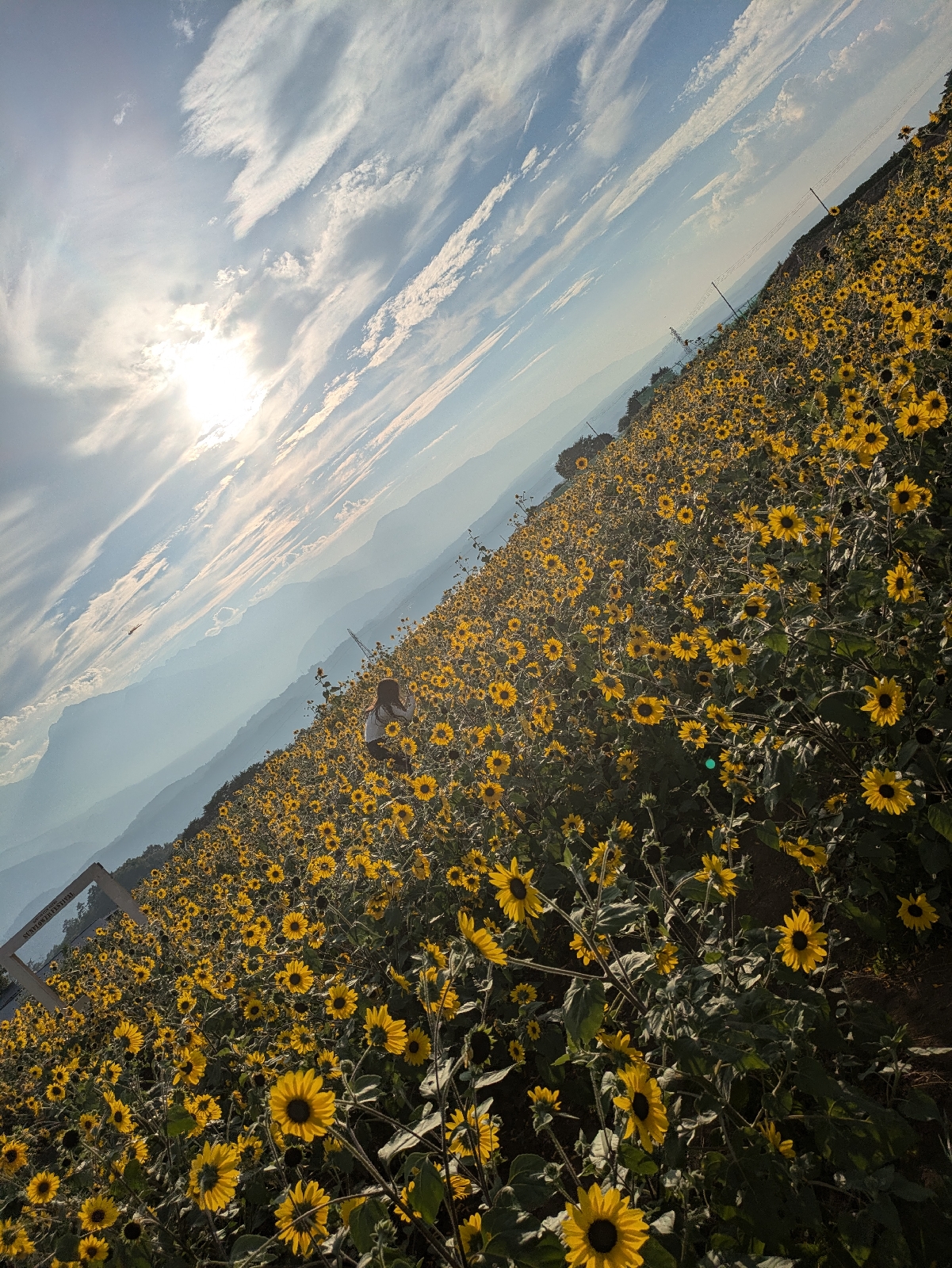Sumo is a seasonal word for autumn. During the Heian period, Shinto sumo wrestling was held as an annual event in the seventh month of the lunar calendar at the Imperial Court, and this is said to be a remnant of that. Many shrines offer sumo wrestling as an offering at autumn festivals, praying for peace and prosperity throughout the world and bountiful harvests.
Strength contests, which are believed to be the origin of sumo, appear in such texts as the Kojiki and Nihon Shoki. It is said that sumo was widely performed in the Yayoi period as an agricultural ritual to foretell fertility. In the Nara period, it seems that sumo wrestlers from all over the country were gathered at the Imperial Palace by imperial decree of Emperor Shomu(45th Emperor - ascended to the throne in 724 and actively adopted the cultural relics system of the Tang Dynasty to improve national administration. He was also a devout Buddhist, and built nunneries for each province, to which he donated Buddhist sutras that he had personally copied. He also built Todaiji Temple and cast the Great Buddha of Nara, creating the Tenpyo culture. However, he also caused the national finances to become unstable by building various temples and donating a large amount of land.), and sumo was shown as entertainment at the Tanabata Festival. In the Heian period, this became increasingly popular and developed into an event called the "Sumo Festival."
【Product Name】
DeKoPon®
Citrus L.
Wakayama Prefecture, Arida City, Arida County, Aridagawa Town, Yuasa Town, Hirokawa Town (JA Arida, JA Group Wakayama)
‘Shiranui: Sumo Mandarin Oranges’ - Shiranuhi Town, Uki City, Kumamoto Prefecture is said to be the birthplace. It was probably named after the place name. Dekopon(Citrus reticulata Siranui)is a registered trademark owned by the Kumamoto Prefecture Fruit Agricultural Cooperative Association. Under the umbrella of the japan horticultural agricultural cooperative association: Shipped through an agricultural cooperative association with JA and citrus production. Only those who meet certain standards to maintain high quality can use the name. It was shipped through the National Federation of Citrus Agricultural Cooperatives with a sugar content of 13 degrees or more and an acidity of 1 degree or less. The proof that the leaves are freshly picked. It becomes even sweeter because it is harvested after it is fully ripe.
In response to the global crisis caused by the pandemic, measures to increase agricultural productivity must be promptly started in order to respond to the food crisis that will surely come in the near future. What about now that the COVID-19 pandemic is widespread and has become an economically developing country? And how dangerous are the people who support Japan? Supplying in Japan instead of relying on imports in Japan Did you know that it is necessary to increase the dependence of the people on japanese rice, which has a certain level of power? Not only that. We must also relearn that the concept of Japan's security is directly linked to the food crisis. It is also a problem of couples and families who support us closely. The tensions and burdens of safety, health, and financial anxieties that cannot be resolved by partners alone are becoming more and more confined to the situation of being trapped in homes. It also increases the isolation of women facing violent partners and keeps them away from the help they need. Violent behavior frequently occurs in a closed space, controlling the other party. Unique “Arida peeling” that can only be done by Arida oranges. It seems to be a method of peeling oranges peculiar to the Arida area, which divides the outer skin into four parts from the top of the fruit without calyx, and this excellent citrus is said to be optimal because the outer skin and inner skin are thin. JA Arida Co-selection Council (Secretariat: Wakayama Prefectural Agricultural Cooperative Association) Misono Town, Wakayama City) is divided into four parts by “Arida stripping”, which is similar to four-leaf clover, so 2020 It has been shipped under the name of “Happy Mikan” since October 19, 2014. In the jurisdiction of JA Arida Farming Center, shishito green pepper cultivation became popular from the middle of the 1960s, and at the peak of the 1975s, about 300 houses of growers worked in the former Kanaya Town (currently Aridagawa Town) jurisdiction. It seems that it was out. Along with that, the Arita Chuo Vegetable Subcommittee was established in the early 1975s, and the cultivation area became around 10 hectares, and it was shipped to the market in the Kansai area, and it seems that there was a time when the KISHU shishito green pepper brand was established. After that, the wave of declining birthrate and declining population and the decrease in the number of farmers affected the growing farmers, and it seems that it decreased to about 1/10 in 2019 to 36 houses. In addition, the aging of producers is inevitable, and in the 1975s and early 1985s, the average age was mainly in the 40s to 50s, but now it seems that they are aging from the 70s to the mid-80s. Therefore, it is forced to reduce the cultivation area by labor, and it seems that it is reduced to an average of about three ares per house. Under such circumstances, in 2020, the Wakayama Prefectural Agricultural Experiment Station Warmland Gardening Center collaborated with the National Kyoto University of Education (Fukakusa Fujinomori Town, Fushimi Ward, Kyoto Prefecture) to produce a new variety of “Shishiwakamaru shishito green pepper” that does not produce spicy fruits. It seems that it is being cultivated within the jurisdiction of the farming center. From the wisdom of nature and farmers, it seems that they are focusing on soil preparation in order to aim for cultivation with as low pesticides as possible. If the tree vigor is not strong, it will cause damage to pests, so it seems that it is aiming to create a solid humic acid-based soil in which activities such as microorganisms are active by adding humic soil and organic soil conditioners. In addition, in order to promote photosynthesis (more than 10 times that of human beings), which is essential for plants, it seems that pruning and pruning are carefully attracted to improve daylighting and ventilation. Furthermore, it seems that open-field cultivation is thoroughly preparing windbreak equipment and covering materials to protect against natural disasters such as natural disasters, typhoons, cold damage, and frost damage. I heard that water management is thoroughly managed with multi-drip and sprinkler tubes. The two main cultivars are “Aoi shishito green pepper” and “Shishiwakamaru shishito green pepper” introduced earlier. About 60% are Aoi and the remaining 40% are Shishiwakamaru. There will be many consumers (readers) who are looking forward to it, so I would like to tell you the story I heard about cultivation. First of all, it is semi-forcing cultivation, but it seems that it will be sown in January, planted in March, and the harvest period will be from mid-May to late November. Open-field cultivation is sown in February, planted in April, and the harvest period seems to be from early July to early November. Raising out-of-season crops are sown from June to July, planted from September to October, and the harvest period seems to be from early December to late May. “Arida City, Wakayama Prefecture”, Located in the northwest, about 20 km from the prefectural capital Wakayama City. The Arida River, which originated from Mt. Koya, flows through and pours into the Kii Channel. Shimotsu Town in the north and Kibi Town in the east to it borders Yuasa Town in the south and faces the Kii Channel in the west. Nagamine mountains in the north and middle mountains in the south - The Arida River runs through the Center from east to west. Plains open in the area, and many Mandarin upland fields shine along with the north and south hillsides. ARIDA Mandarin Orange - Citrus kinokuni (species of mandarin orange) - It has been known all over the country for a long time as the home. Citrus accounts for more than 95% of the city's agricultural production, most of which is Citrus Unshiu. Don't miss the two representative varieties of delicious oranges.), and its deliciousness makes it popular with consumers, and its stable supply is well received by market participants and consumers. I talk about history. One tachibana naturally grew in Kanda Pond in Itoga Town in the city during the Eikyo era (1429-1440). Every year many another to produce a crop, mandarin oranges because the taste was sweet like elaborate.Tensho 2 (1574) Itoga's village headman (esp. in the Kansai region) Mr. magoemon ito brought back two small mandarin oranges saplings from higo yatsushiro at the behest of Kishu Hou (surname). Blessed climate, farmers' efforts, and strict quality control at the time of shipment. The foundation of mandarin oranges kingdom was built by the hard-working(industry)of farmers. The fishing industry is very active, and the amount of landed coastal fisheries is the highest in Wakayama prefecture. Hairtail, shirasu, horse mackerel(Trachurus japonicus Temminck et Schelegel, 1844), mackerel, red sea bream(porgy : Pagrus major (Temminck et Schlegel, 1843)), wakame(Undaria pinnatifida (Harvey) Suringar), green laver(enteromorpha : Ulva prolifera O. F. Müller, 1778)are abundant, especially hairtail(It is made of white fish and is chewy when made into sashimi, soft when boiled, and has a light taste.)is the best in the country. Let's move on from the bragging story. With an area of about 37 km2, it is blessed with nature of sea, mountain and river, and the Arida River, which flows into the Kii water supply from sacred mountain Mt. Koya, is a mother-river. It corresponds to the connection zone with the Seto Inland Sea Climate Zone and the Nankai Climate Zone.I hear that the average annual temperature is as warm as 16 degrees Celsius, the average annual rainfall is about 1,600 mm, and snow cover is rare. In addition to mandarin oranges, the main industry is famous for manufacturing fish, oil, and other local industries such as mosquito coils and work gloves. On May 1, 1956, Arida Town, Arida county enforced the city system and became Arida City. Merged with Hatsushima Town in 1958. There are also five fishermen's associations in the City. Bottom fishing, set net fishing, single fishing, gill net fishing, etc. There are abundant fish species to be landed, and they are mainly shipped to Keihanshin. A part of the northern coastal industrial area of the prefecture at the mouth of the right bank of the Arida River : In addition to petroleum refining, there are electric wires, cables, can-manufacturing, and shipbuilding industry. Also, as a local industry, there is a manufacturing factory for working gloves and mosquito coils. Ask me to say it again. The city boasts a scenic tourist destination with citrus cultivation and a beautiful coastline. Arida River used to be Mikan's Export boat flight.It seems that it is now highly used as agricultural and industrial water. The flat areas on both banks are fertile and the cultivated land is well organized. In the past, rice wheat, pyrethrum, papaver, etc. were cultivated. Mostly converted in recent years, KISHU mandarin oranges and some paddy rice and some green cultivation is carried out in the beach sand area. Palaeozoic strata - A rock formation as a species of the Mikabuo system. It has abundant water retention, good drainage and breathability, and is suitable for cultivation. Wakayama Prefecture announced on February 19, 2021 : 日本農業遺産 - “聖地 ; 高野山と有田川上流域を結ぶ持続的農林業システム” and “みかん栽培の礎を築いた有田みかんシステム” 県内の認定は, 海南市下津地域と合わせて3地域. “Aridagawa Town, Arida District”, The historical development of this area was when Kobo Daishi opened Mt. Koya. Arida Highway - Starting from being opened, a living area is formed along the Arida River. The climate belongs to the Setouchi climate zone and the Nankai climate zone. In the plains and mountains, the climate is relatively warm, although there are some differences in weather conditions. Industrial structure : Number of employees by industry major category - The primary industry accounts for more than 30% of the total. In addition, it is an area where agriculture and forestry play an extremely high role. The town is located almost in the center of the prefecture. Then, it forms an elongated shape from east to west. Arida River - It meanders west through the Center, creating abundant nature and industry. On January 1, 2006, the former Kibi Town, Kanaya Town, and Shimizu Town merged. Fujinami district ruins etc. “Yuasa Town”, A story about a wealthy merchant BUNZAEMON KINOKUNIYA of the Edo period who brought ‘Kishu Mikan’ to Edo where the price for mikan were skyrocketing and made a fortune is famous - Tamura Mikan : A garden created by carving out a well-drained rocky mountain - Tamura District. It is located on the west coast of the Kii Peninsula in the central part of the Prefecture. The area of the town is 20.79 km2. About 30 minutes by car from Wakayama City, the prefectural capital. About 1 hour from Kansai International Airport by highway. Facing the Kii Channel, coastal fisheries and citrus cultivation are flourishing due to the warm climate. In addition, seafood such as fresh whitebait landed in Uasa Bay is known. Currently, the town system is celebrating 125 years. Kumano, a sanctuary in the southern part of the Kii Peninsula : In ancient times, the Kumano Kodo, which was used by pilgrims, traversed the town. From that location, it was often used as a lodging or resting place. At the end of the Heian period, a powerful family named Mr. Fujiwara - Aoki, based in this area, he expanded his power during the time of Mr. Muneshige Yuasa (1118-95). Eventually, the Yuasa clan remains as a samurai corps with wide power on the Kii Peninsula. Saint Mogaku : With the help of Moritoo ENDO, he descended to Minamoto no Yoritomo and was relieved to be in the Kamakura Gokenin; immediate vassal (of the shogun; Kamakura and Muromachi periods) : From the influential family of the Heike. Yuasa is flourished mainly in commerce and industry such as soy sauce brewing. Soy sauce that dates back to the Kamakura period : Later, with the protection of the Kishu clan, brewing flourished. It is now said to be the birthplace of soy sauce brewing. An area of the city where soy sauce brewing was popular - Even now, traditional building townhouses and storehouses are often left behind. In December 2006, it was selected as an Important Preservation District for Traditional Buildings. Even now, we are proceeding with the preservation and maintenance of the historic townscape. A story that tells the history and tradition of its origin. “First drop” - In April 2017, Kishu Yuasa was certified as a Japanese heritage site. “Hirogawa Town”, Located in the center of the prefecture, at the southernmost tip of the Arida District. Hirogawa flows through the center of the town and flows into the Kii Channel. The east borders Aridagawa Town and Hidakagawa Town with a watershed. The west faces Shikoku far away across the Kii Channel. In the south, the high Shirama Mountains run from east to west. The north borders Hirokawa River and borders Yuasa Town. It is also 40 km to Wakayama City and 100 km to Osaka City. The history is old and begins in the early Jomon period at the Takashima site.Hironsho - From the end of ancient times to the beginning of the Middle Ages, it was a place of cultural fusion that was popular as a place to go back and forth on Kumano Road. Established on April 1, 1955 by the merger of 1 Town and 2 Village. The Flower's Lilium japonicum. The Tree’s Quercus glauca. The town facing the Kii Channel, which receives the blessings of the Kuroshio Current, has a 400-year tradition - Production Arida Mikan. Growing up in a warm climate and well-drained land, it is exposed to the Sun. It has an exquisite balance of sweetness and acidity and is very tasty. National Important Cultural Property Hozoji Temple(Bell tower): Built in 1436 by a superior Myoshu. During the Muromachi period, it prospered as the Kishu South Head Temple of the Seizan school of the Jodo sect. It used to require 25 brunch temples. Moved to nearby Hiro Hachiman Shrine(Kaminakano)in 1695. It was moved when the gods and Buddha were separated in the Meiji era : 1868-An ordinance to distinguish Shinto and Buddhism was issued. In the subcommittee, we are particular about making soil mainly made of organic matter and cultivate it. The cultivated area of delicious and tasty garlic is about 3 hectares. About 30 t shipped to Market in Kanto Region from late April to early May. It is easy to store but tends to dislike moisture. Place in a good breathable net bag and place in a dry place in shade. Or store in the refrigerator. If you peel it, it will lose its freshness, so you should peel it just before using it. I've been explaining the excellent Japanese citrus dekopon products that come in spring many times through my blog, so you probably know it. A variety cultivated by blending Kiyomi and Ponkan, it has a high sugar content, a good taste, and a rich sweetness and a refreshing aroma at the moment of peeling. This season when cherry blossoms begin to bloom and then ephemeral. A letter from Wakayama, the citrus kingdom with even higher sugar content. Please appreciate it. “Sustainable Development Goals Kokusho-Kokusan Day” : General Incorporated Association Established by the Central Union of Agricultural Cooperatives. October 16, 2022 is also “World Food Day” established by the Food and Agriculture Organization of the United Nations (Headquarters: Rome, Italy), and it is a day to think about food problems in many countries around the world. The hope is to increase the number of people who support agriculture that produces food by making people aware of the issues related to Japanese agriculture.
The popular name Dekopon 🄬 was named after this protrusion of the fruit stalk. The pericarp is yellow-orange, 3.5-5 mm thick, thin for large fruits, flexible and easy to peel, and there is little floating skin. It is completely colored in early December, the flesh is orange, and the sac is thin and soft. The sugar content of the fruit juice is about 13 to 14%, the acid content is about 1% during the appropriate ripening period, and the ripening period is from February to March, and the taste is extremely good. It is a male sterile type non-nucleus.
Farmers in the Arida area of Wakayama Prefecture grow and work with this excellent fruit as carefully as their own children, like the children of the energetic sun.
The Arida River flows from the foot of Mt. Koya to the Kii Channel, and the regional collective trademark "Arida Mikan", which boasts a history of about 450 years, is cultivated in the mountains on the left and right. Taking advantage of the location with little flat land, 90% of the cultivated land is citrus fruits centered on Satsuma mandarin, which is blessed with a warm climate and introduced institutional cultivation to deliver citrus fruits to consumers nationwide all year round. We are advancing. The production of Satsuma mandarin accounts for 10% of the whole country, and it seems that JA is of course the largest in Japan, and Wakayama Prefecture, which also includes neighboring production areas, is the center of production. Along with many citrus fruits, fruits such as grapes, japanese medlar, kiwifruit, plum, vegetables such as cherry tomato, garlic, shishito green pepper, flowering trees such as spray chrysanthemum, sweet pea, roses, chloranthus glaber Makino, and japanese in the mountains. Pepper is the largest producer in Japan, and paddy rice is also cultivated while preserving the terraced paddy field (Aragi Island: Shimizu, Aridagawa Town, Arida District) and rural landscapes.
